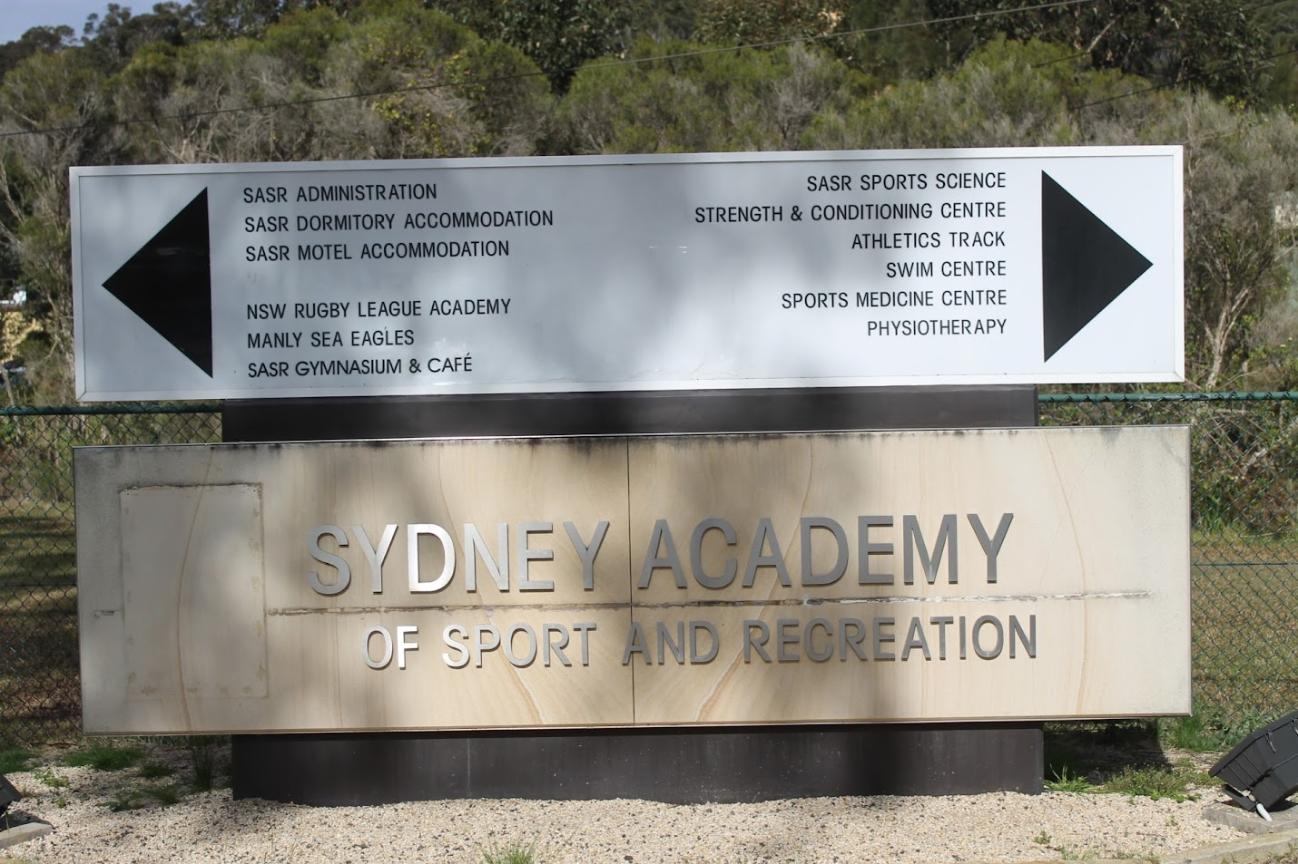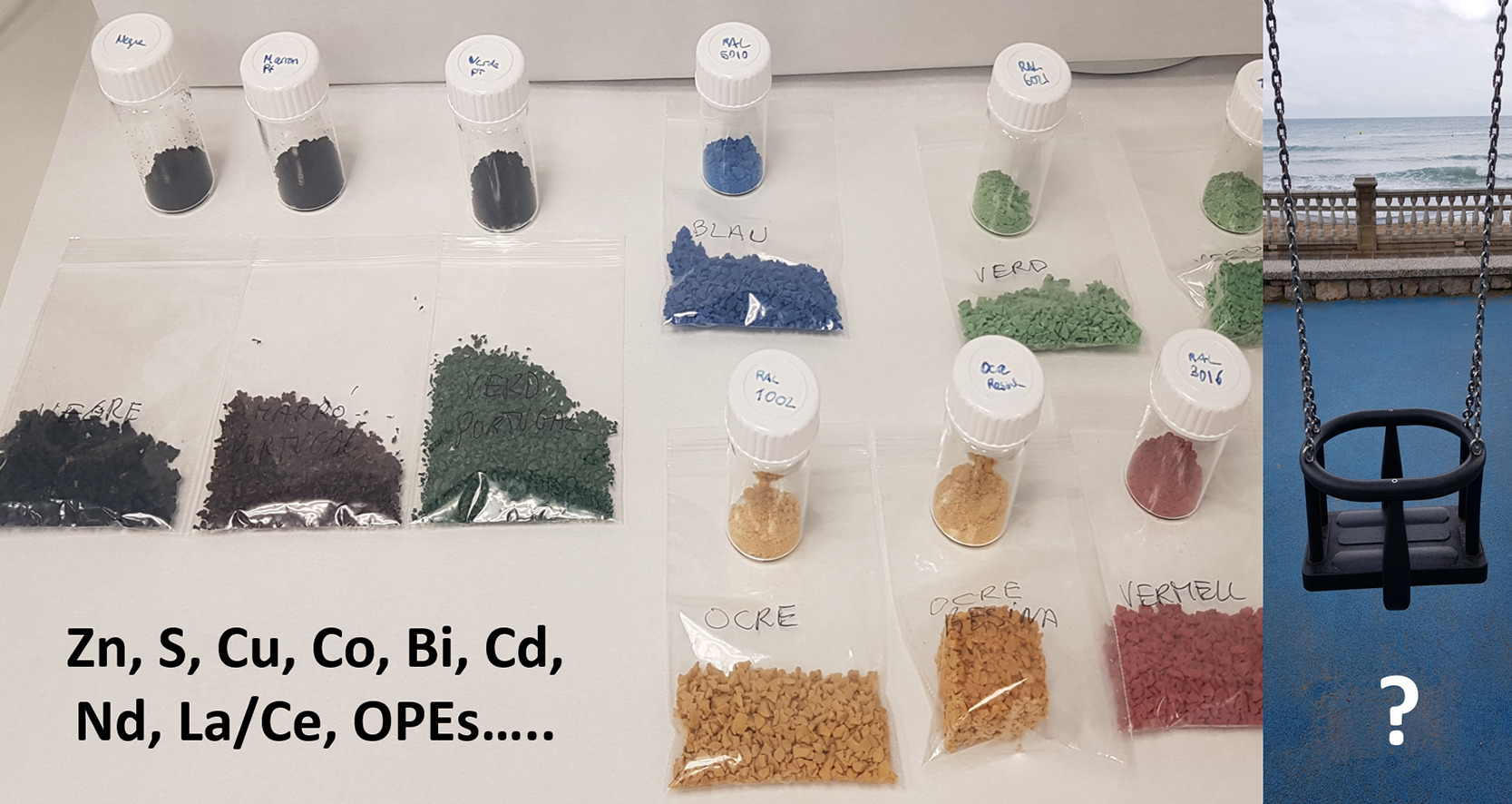Sydney Academy of sport athletic Track Problems persist: concerns rubberised materials - pollutants leaching into Narrabeen Lagoon
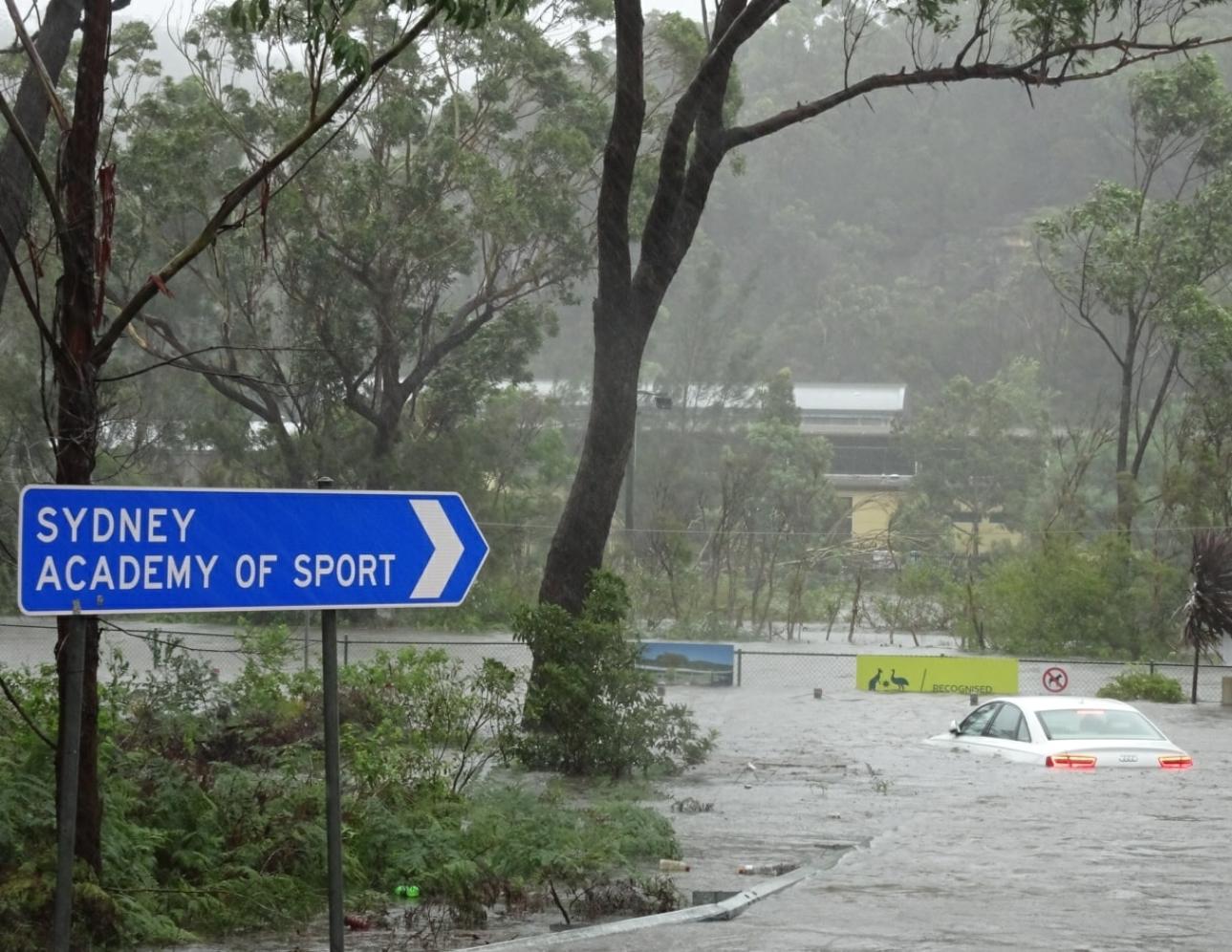
Sydney Academy of Sport, Wakehurst Parkway, Narrabeen - photo supplied
The synthetic tracks at Sydney Academy of Sport and Recreation, Narrabeen, resurfaced in 2018 after a campaign led by former Mackellar MP Jason Falinski, have deteriorated in recent months when the area has been flooded by rains, and the bubbling of the surface from early December 2023, a sign that water is not draining properly and that issue needs to be addressed, have led from user groups to call for repairs and concerns from residents rubber particles and chemicals are leaching into Narrabeen Lagoon.
A Joint Submission by the Sydney Pacific Athletic Club and Manly Warringah Little Athletics was made on Wednesday 9 March 2016 to the NSW Government to acquire 'in the very short term, support for the resurface of the synthetic track, jumps and throws surfaces to IAAF Standard at the Athletics Track & Field Centre, Sydney Academy of Sport and Recreation, Narrabeen'.
The Sydney Pacific Athletic Club and Manly Warringah Little Athletics are both long standing and year round users of the Narrabeen Track & Field Centre. Collectively they have 1100 active athlete members ranging in age from 5 to 74.
Included in the Joint Submission was supporting correspondence from the Chief Executive Officer of Athletics NSW and the Chief Executive Officer of Little Athletics NSW. Both Athletics NSW and Little Athletics NSW are also long time users of the Narrabeen Track & Field Centre.
Then NSW Minister for Sport, The Hon Stuart Ayres, replied the facility had last been resurfaced in 2008 at a cost of $430,000.00 and that due to the high usage, repairs works had been undertaken during the 2014 to 2018 period to maintain the track. Mr. Ayres stated the facility remained 'fit for purpose' for general community use and that if it was incompatible with members needs, alternative facilities could be sourced for the clubs until the track could be resurfaced.
Frustrated with the response residents approached their then Federal representative, Mr. Falinski.
On December 17th, 2016 Falinski met with key community and athletics leaders Vicki Busse (President of Manly Little Athletics Centre), Robert McEntyre (President of the Sydney Pacific Athletics Club), Duncan Tweed (CEO of Athletics NSW), Peter Crombie (a Masters world champion athlete), and others, at the Narrabeen athletics track to discuss the necessity of an urgent upgrade to the dilapidated facility.
Peter Crombie who trained at the Narrabeen athletics track 3 times a week with his training squad of some 18 members said, “the lower leg injury rate of my group is at 75%. I have athletes in my group aged 14 to 70’s. You might expect the lower leg injury rate for that age group to be around 30 to 35%, however, the track is in such poor condition it’s like running on concrete in many parts.
We do everything possible to minimise the impact, such as warming up and down on the grass infield, wearing running flats rather than racing spikes and running in the outside lanes, however as the track is likely 3 years overdue for replacement it is of limited value.
Not only is the track like concrete, it is now very dangerous with surface pieces lifting quite badly as the water seeps under the current surface causing it to lift in more and more places.”
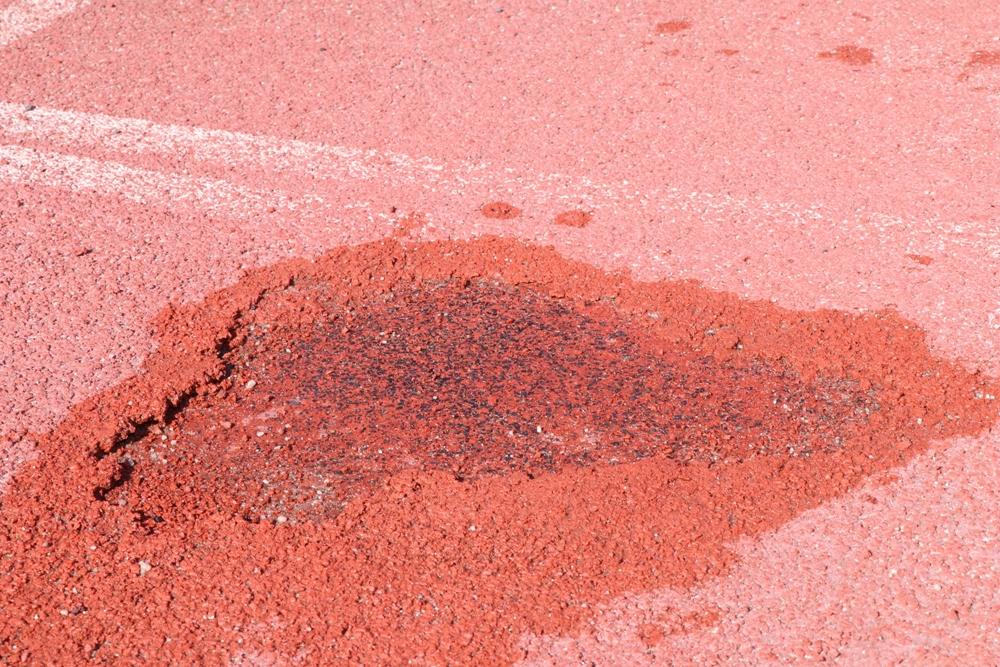
Narrabeen Track worn out
“There are currently ten facilities with synthetic athletics tracks in New South Wales. In 2016 and 2017 the only track which will not host an Athletics NSW competition is Narrabeen because we do not consider that the surface is of a sufficient standard. The condition of the track is also negatively impacting participation levels, meaning that less people on the Northern Beaches (and indeed the whole of northern Sydney) are enjoying the fun and healthy lifestyle which athletics can provide” said Duncan Tweed.
“We pay entry and usage fees to use the Narrabeen track each year, yet do not receive the Government maintenance of the facility we would expect. I genuinely fear for the safety of our little athletes who run on this track week in, week out.” said Vicki Busse.
“I attend Little Athletics with my kids … the track is now becoming dangerous. It caused an injury to one of the kids training there in November as the guard rail is coming loose on many parts of the track and has to regularly be kicked back into place. The boy training rolled his ankle over part of the guard rail which was in Lane 1 and had to be helped off the track and back to his car at the end of the training session.” said Robyn O’Reilly, a mother of some little athletes.
“The northern beaches deserves state of the art facilities. The Little Athletics organisers halted competition just after 9am, so that I could share with our athletes about our fight to upgrade the track” Mr. Falinski said.
“In October 2016, many residents reached out to me regarding the perilous state of the synthetic athletics track at Narrabeen. The athletics track is in such a state of disrepair that it’s putting our athletes at risk of serious injury. I launched an online petition calling for the upgrade of the athletics track. So far, the petition has received nearly 1,000 signatures in a really short space of time.”
“I cannot believe for a moment that the track is fit for purpose. The wear and tear and pot holes in the track are so deep that children are falling in, never to be found again. I suspect that every missing pet around Narrabeen has fallen in one of the chasms on the athletics track” said Falinski.
“This track must be fixed now and I will be writing to the NSW Minister for Sport calling for a meeting about this issue and immediate action. We cannot let our athletes be at risk of injury any longer. Our community gives so much and asks for so little. The people of the Northern Beaches deserve their fair share of Government funds” said Falinski.
On September 22nd 2017 Mr. Falinski announced funding had been secured after a 12 month push by community members and Mr Falinski speaking to the Sports Minister on several occasions.
“I am pleased to report that the NSW Office of Sport hopes to commence the upgrade of the track in December, with completion by about March 2018. This result would not have been possible with the dedication of key community and athletics leaders Vicky Busse (Fmr President of Manly Warringah Little Athletics) and Shanna Colver (Current President of Manly Warringah Little Athletics), Robert McEntyre (President of the Sydney Pacific Athletics Club), and Peter Crombie (a Masters world champion athlete).” Mr. Falinski stated
On Wednesday 13 December 2017, the NSW Minister for Sport, Stuart Ayres, issued a Media Release which included reference to the $1.2m allocated to the upgrade. By January 2018 work had commenced on the track upgrade.
Repairs required to the substrate had been completed by early February and on Friday 23 February 2018 the NSW Office of Sport Project Manager for the Narrabeen Track upgrade provided an update, stating the track surface being laid is a Polytan SPURTAN surface. The substrate had been repaired and the base asphalt layer had been laid on the Track.
By the second week of March 2018 installation of the solid layer of the new track was complete. On Friday 9 March, the contractors had started the final layer.
On April 18, 2018 the sporting groups were advised by the NSW Office of Sport that the upgrade to the Narrabeen Track has been completed.
A Polytan SPURTAN surface, according to the product flyer, is;
'The Spurtan WS synthetic surface is the cost-effective all-round solution for athletics. The structure-coated surface is primarily used for running tracks, run-up tracks and athletics facilities. It has a structured surface that is also water-permeable, allowing for easy and fast installation. Excellent traction, shock-absorption and deformation properties complete the features of this surface.
AREAS OF USE
- Athletics stadiums
- Competitive running tracks
- School sports facilities
- Multipurpose facilities
PROPERTIES
- Structural spray-coated surface
- Rubber granules, elastomer, spray-coated
- Water-permeable
- Can be certified according to IAAF requirements'
IAAF requirements are defined in the IAAF Track and Field Facilities Manual. The IAAF, now World Athletics, formerly known as the International Amateur Athletic Federation and International Association of Athletics Federations, is the international governing body for the sport of athletics, covering track and field, cross country running, road running, race walking, mountain running, and ultra running.
Synthetic track builders state there are several things to consider regarding the design and construction of running tracks and sports fields, but one aspect that will ensure track longevity and performance is addressing the need to evacuate water and keep debris off the track surface. Damage is caused by standing water or “ponding” wreaking havoc on an expensive track surface.
Add water run-off from the area around it that bring debris and pollutants, and the rate of surface deterioration increases. A track left with standing water over time causes major damage to the surface, delaminating the synthetic surface and asphalt base and severely shortening its usable life.
Those working in this field state proper drainage trenches are vital to stop the surface deteriorating.
The other side of that aspect is the damage the synthetic properties in these surfaces may cause to the surrounding areas. When residents of this area, and others, hear a synthetic field has been installed with properties of 'rubber granules' or 'elastomer' (any rubbery material composed of long chainlike molecules, or polymers, that are capable of recovering their original shape after being stretched to great extents—hence the name elastomer, from “elastic polymer”) alarm bells go off - especially if that deteriorating rubber field is beside a creek or waterway, or in this case, at the edge of and part of a water catchment that floods and fills that facility when it rains.
Residents have pointed out for decades that building such a facility in this location, without adequate drainage, and as part of a catchment that flushes all surrounding creeks into the sea, has hatched the logical result.
Concerns about what is leaching into the Lagoon and impacting wildlife stems from the coalescing studies into synthetic sports fields.
A 2019 study [1.] delving into incidences involving pupils suffering health problems caused by synthetic running tracks in China investigated the levels of 16 known harmful ingredients in 167 school running tracks. In all samples, the recognized toxic solvents and additives, such as the benzene series, soluble mercury, 3,3′-dichloro-4,4′-diaminodiphenylmethane (MOCA) and toluene diisocyanate monomer (TDI) were under the limits of detection.
In contrast, polycyclic aromatic hydrocarbons (PAHs), phthalates, Short chain chlorinated paraffins (SCCPs) soluble lead, cadmium and chromium were found in 86%, 88%, 46%, 81%, 43% and 83% of the specimens, respectively.
The levels, toxicology and distribution of these known chemicals were evaluated. Then, a static-headspace gas chromatography-mass spectrometer (GC-MS) method in full scan mode was employed to screen for unknown volatile chemicals. Three groups of chemicals reflecting different kinds of pollution sources were discovered: new solvents, such as N, N-Dimethylformamide, new additives, such as 2-ethylhexanoic acid, and by-products, such as carbon disulfide.
Most of the hazardous components detected had recently been included in a new national standard to improve the safety performance of synthetic running tracks.
A 2021 study [2.] delved into Polymer modified bituminous, the thick coatings that are increasingly used in the construction industry to protect underground parts of buildings from groundwater.
It was proven that moisture absorbed by the coatings is retained within this layer and is not transferred to the substrate on which the coatings are laid. It was also found that water in contact with the tested coatings changes its reaction to alkaline, which can result in contamination of groundwater in the area of waterproofing coating.
A 2023 [3.] study revisited current understanding of the chemical complexity of different kinds of particulate vulcanised elastomers widely used in playgrounds and sports fields, adding new data on trace element and organophosphate ester contents of used tyre and EDPM crumb rubber.
That study's abstract states:
'Enrichments in elements such as Zn, S, Co, Bi and Nd relate to the vulcanised mixtures created during manufacture. Zinc concentrations vary across an order of magnitude, being highest in our used tyre particulate samples (up to 2.4 %). In contrast, other trace element variations are due to coloured pigments causing increases in Cu and Zr (blue), Cr (green), and Fe and Sn (red and yellow) concentrations. The use of pale fillers such as CaCO3 and clay minerals (rather than carbon black) strongly influences Ca and Al concentrations, which are much higher in the coloured EPDM than in black used tyre crumb rubber. Representatives from all three of the main organophosphate ester (OPE) groups, namely chlorinated (e.g. TCEP, TCIPP, TDCPP), alkyl (e.g. TEHP, TEP, TNBP, TBOEP) and aryl (e.g. TPHP, EHDPP, TCP) were identified, confirming how these chemicals are commonly used in modern rubber compounding as flame retardants and plasticisers. Elevated concentrations of TEHP (up to 117 μg/g) in coloured-coated used tyre turf infill crumb rubbers were traced to the coating rather than the crumb rubber itself.
The presence and weathering behaviour of OPEs in recreational crumb rubber materials deserve closer investigation. The ecological “onehealth” impact of potentially toxic substances present in recreational crumb rubbers will depend on if and how they are released during play and sports activities, maintenance procedures, and natural weathering. We argue that detailed chemical data on these materials should be available to buyers, as manufacturers strive to reduce ecotoxin content as part of the quest towards sustainable use and recycling of vulcanised elastomers.'
These concerns about what is impacting Narrabeen Lagoon due to the incessant and ongoing problems of the location of this sports facility, including all who use it, and all who live around the lagoon and in it - the wildlife - have reignited a conversation to find another place that will not be closed for use so frequently and not have such an impact on the environment of the Narrabeen Catchment and Lagoon.
The NSW Office of Sport advises the Sydney Academy Athletics Track is closed for public use until further notice. A temporary grass track has been established in the interim, but that too closes during rain periods as this is a flood zone.
The Sydney Academy of Sport and Recreation (at Narrabeen) webpage states;
'The next stage in the remediation process for the damaged track at Sydney Academy will commence on Thursday, 8 February 2024.
This will involve geotechnical investigation works where test holes and bores will be drilled within the track precinct.
These works will enable us to monitor and understand how the site responds to a range of weather conditions, in particular wet weather.
The results of these works will guide the next stage of the process.
Access to the infield area of the closed athletics facility for training and/or competition will not be impacted by these works.
The temporary grass athletics track on Oval 1 will remain open during this time.
For further information, opening times and track availability, please see the Frequently Asked Questions.
Thank you for your patience and understanding as we undertake these vital works.'
Where the perimeter of the Sydney Academy of Sport and Recreation meets Narrabeen Lagoon:
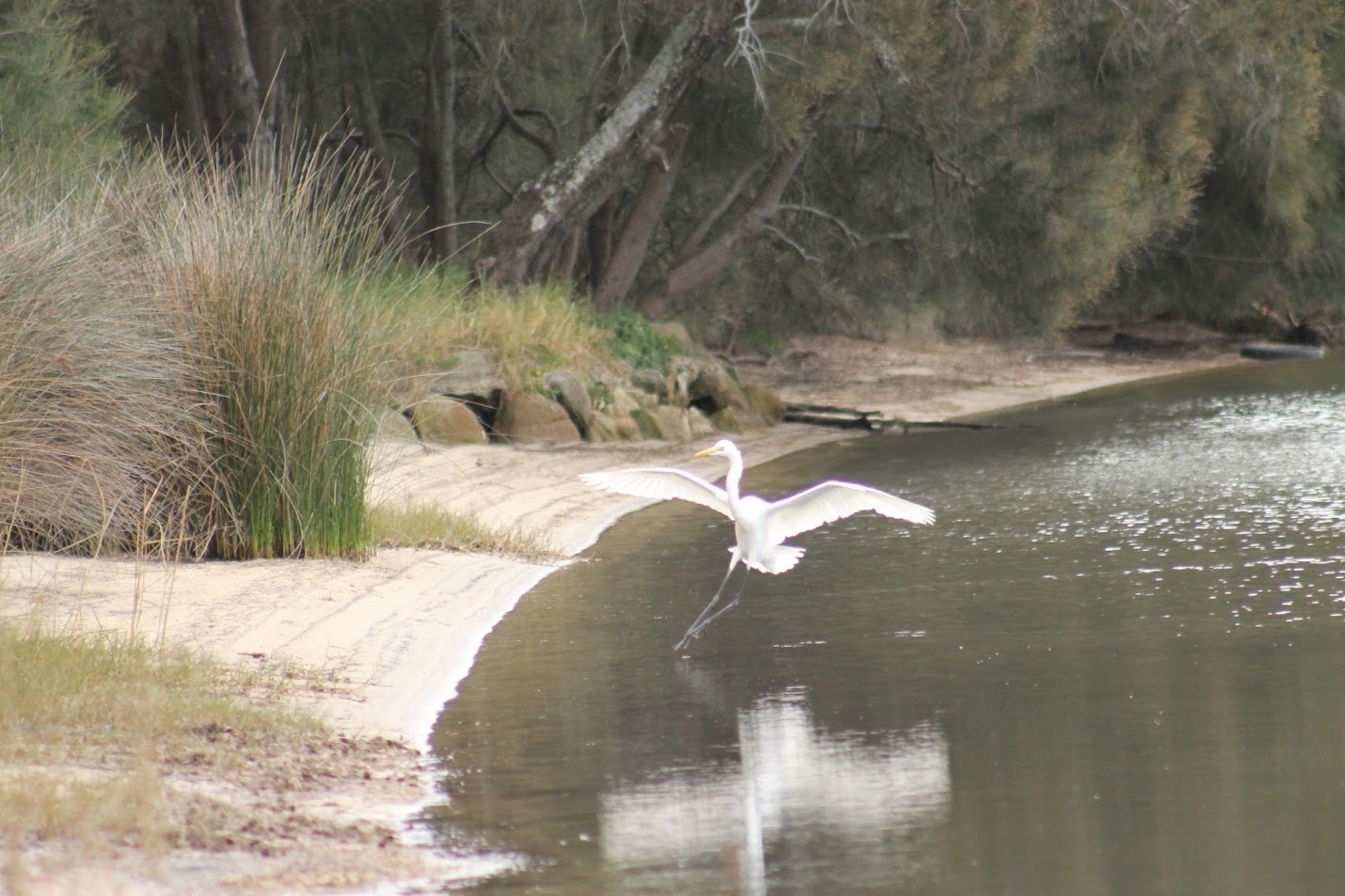
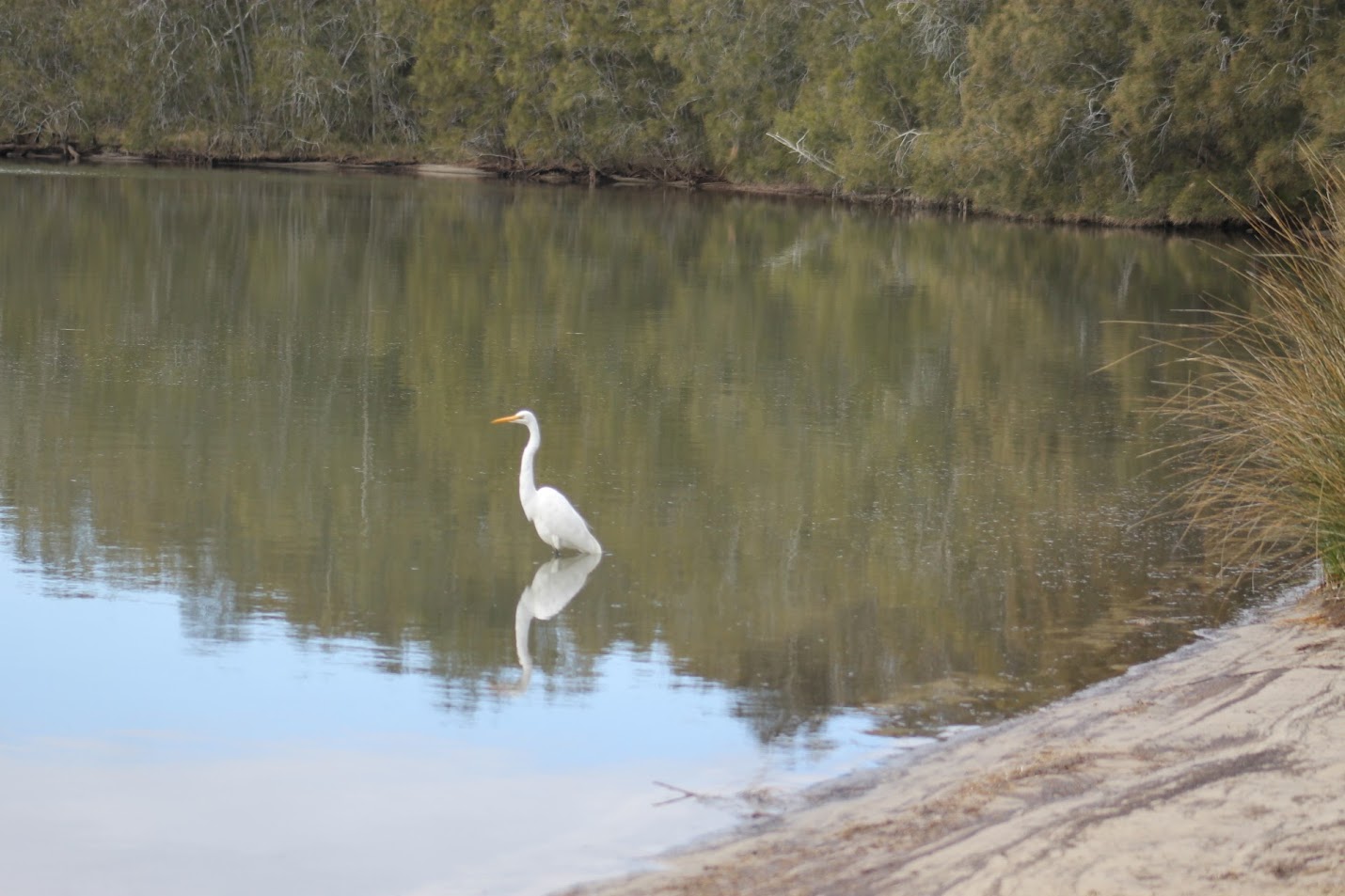
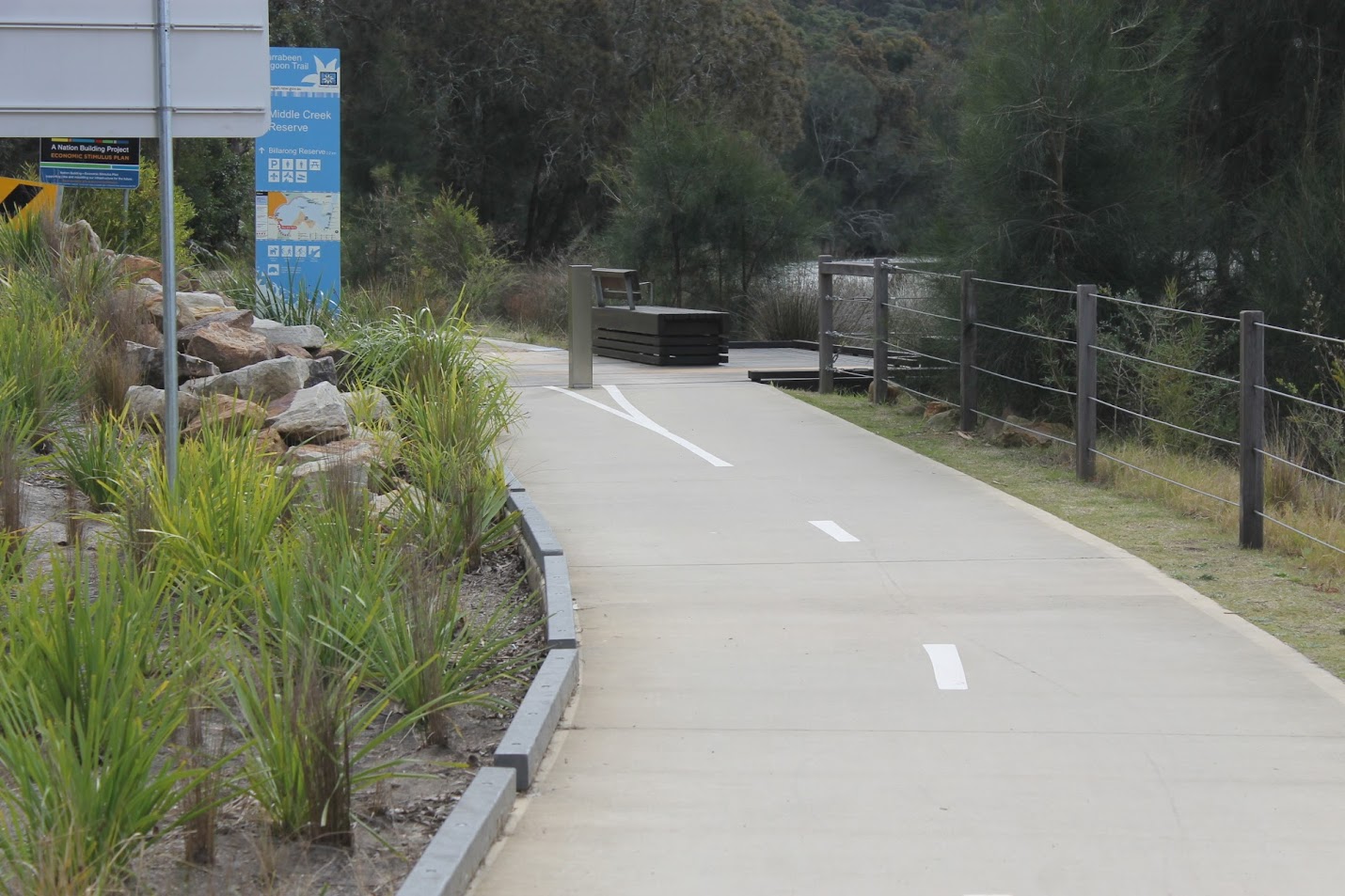
References
- Wu, X., Li, N., Ji, H. et al. Determination and analysis of harmful components in synthetic running tracks from Chinese primary and middle schools. Sci Rep 9, 12743 (2019). https://doi.org/10.1038/s41598-019-49142-9
- Francke B, Wichowska M. Influence of Groundwater pH on Water Absorption and Waterproofness of Polymer Modified Bituminous Thick Coatings. Materials (Basel). 2021 Apr 27;14(9):2272. doi: 10.3390/ma14092272. PMID: 33925731; PMCID: PMC8125168
- Moreno T, Balasch A, Bartrolí R, Eljarrat E. A new look at rubber recycling and recreational surfaces: The inorganic and OPE chemistry of vulcanised elastomers used in playgrounds and sports facilities. Sci Total Environ. 2023 Apr 10;868:161648. doi: 10.1016/j.scitotenv.2023.161648. Epub 2023 Jan 17. PMID: 36669664.
